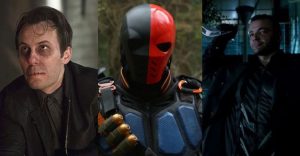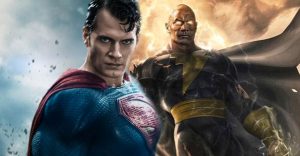10 Things You Never Knew About Trading Places (1983)

John Landis’ 1983 screwball comedy Trading Places was one of the most critically and commercially successful movies of the entire decade. In addition to garnering favorable reviews, the film turned an estimated $15 million budget into a massive $90.4 million box-office hit. As a result, it was the fourth highest-grossing movie of 1983 in the U.S.
Of course, the film also further introduced the world to Eddie Murphy, the precocious SNL standout turned bona fide movie star. Co-starring Dan Aykroyd, the film features the socioeconomic swap between a wily street hustler (Murphy) and an uptight and affluent stockbroker (Aykroyd). Here’s a look back at the film’s production history.
10 Loose Inspirations

While body-swap movies like Freaky Friday and Vise Versa were all the rage in the 1980s, Trading Places took inspiration from the more classic literary and cinematic fare. The story is loosely based on Mark Twain’s The Prince and The Pauper, a story in which poor and rich men swap lives.
However, the film also closely resembles the 1935 Three Stooges movie Hoi Polloi, as well as a little-known British movie starring Gregory Peck called Man With a Million (1954). The name Billy Ray Valentine is also taken from a character named Henry Valentine in the Twilight Zone episode A Nice Place to Visit, which also closely resembles the plot of Trading Places.
9 Meant For Richard Pryor & Gene Wilder

According to the Business Insider, Trading Places was originally meant as a Richard Pryor/Gene Wilder vehicle coming off the massive success of their two prior collaborations, Silver Streak and Stir Crazy, respectively.
Unfortunately, Pryor was injured whilst doing drugs and couldn’t play the role. When Eddie Murphy was considered, he lobbied for Gene Wilder to be replaced, out of fear of being perceived as a Richard Pryor wannabe. Pryor was Murphy’s number one comedic inspiration growing up.
8 Casting Hopefuls

Before Denholm Elliot was cast as the elegant English butler Coleman in the film, Landis considered Sir John Gielgud and Ronnie Barker for the role. For the role of Mortimer Duke, Landis’ first choice was Oscar-winner Ray Milland.
After getting his first choice of Ralph Bellamy as Randolph Duke, Landis eventually cast Don Ameche as Mortimer despite his 13-year absence from the big screen. Both Ameche and Bellamy reprise their roles in hilarious cameo appearances made in Coming to America, also directed by Landis and starring Eddie Murphy.
7 The Mackenzie Brothers

In the third act of the film, the main characters spend time aboard a train during a costume ball. At one point, a pair of baggage carriers played by SNL alums Al Franken and his partner, Tom Davis, appears. Franken and Davis were not the original choices.
As it happens, the SCTV characters known as the Mackenzie Brothers, played by Rick Moranis and Dave Thomas, were originally set to appear as the baggage handlers. When their schedule fell through, Dany Aykroyd suggested Franken and Davis instead. Moranis and Davis would appear in their own Mackenzie Brothers film, Strange Brew, the same year Trading Places was released.
6 Jamie Lee Curtis’ Apartment

While filming Trading Places, star Jamie Lee Curtis was engaged to iconic 1930s movie star Marlene Dietrich’s grandson, J. Michael Riva, who was a production designer at the time. The two split shortly after and Curtis married filmmaker Christopher Guest in 1984.
During her time making the movie, Curtis spent many nights in Dietrich’s historic Manhattan apartment (12E), located at 993 Park Avenue. Of course, as the child of Tony Curtis and Janet Leigh, Jamie Lee knows a thing or two about Hollywood royalty.
5 Jamie Lee Curtis’ Sister, Kelly

Speaking of Jamie Lee Curtis, her sister, Kelly, also appears in Trading Places. Kelly Curtis plays the blond country-club woman named Muffy, an upscale socialite who clings to Billy Ray’s side after he begins enjoying life-changing financial success.
Kelly Curtis tallied 20 big and small screen credits in her career, most notably as a recurring guest star on the 1996 TV series The Sentinel.
4 Don Ameche’s One-Take Obscenity

Due to his religious upbringing, golden-age veteran actor, Don Ameche, took serious issue with a profanity-laced line of dialogue his character Mortimer utters near the end of the film as he berates a group of Wall Street traders.
As a compromise, Ameche agreed to film the scene as scripted in one take only. He refused to use the F-word more than once. Landis agreed and was able to get the shot in a single try.
3 Italian Christmas Tradition

Much like A Christmas Story in the United States, which seems to play on a 48-hour continuous loop on December 24th and 25th, Trading Places has become a similar Italian Christmas tradition.
Every year on the night of Christmas Eve, Trading Places is broadcast on the local Italia 1 TV channel. The tradition often includes annual airings of the first three Home Alone films, Jack Frost, and A Nightmare Before Christmas.
2 Inspired Philadelphia Restaurant

Landis and his cast and crew spent 15 days filming in Philadelphia, where much of the movie takes place. Following the massive success of the film, a local restaurant was named after the two main characters in the film, Louis Winthorpe and Billy Ray Valentine.
Indeed, Trading Places inspired an eatery called Winthorpe & Valentine, located inside the Westin Hotel at 99 S 17th Street, Philadelphia. Unfortunately, the restaurant is currently closed for dine-in due to COVID-19.
1 The Eddie Murphy Rule

Trading Places not only inspired an upscale restaurant, but it also led to a 2010 Wall Street regulation that has been affectionately dubbed The Eddie Murphy Rule.
As part of the Wall Street Transparency Act introduced in 2010, the film was cited in the formulation of a rule to ban insider trading by those with secret valuable information. The rule essentially bans the actions taken by the greedy Duke brothers in the film, who use Beeks’ intel on frozen orange juice to make a fortune.

















